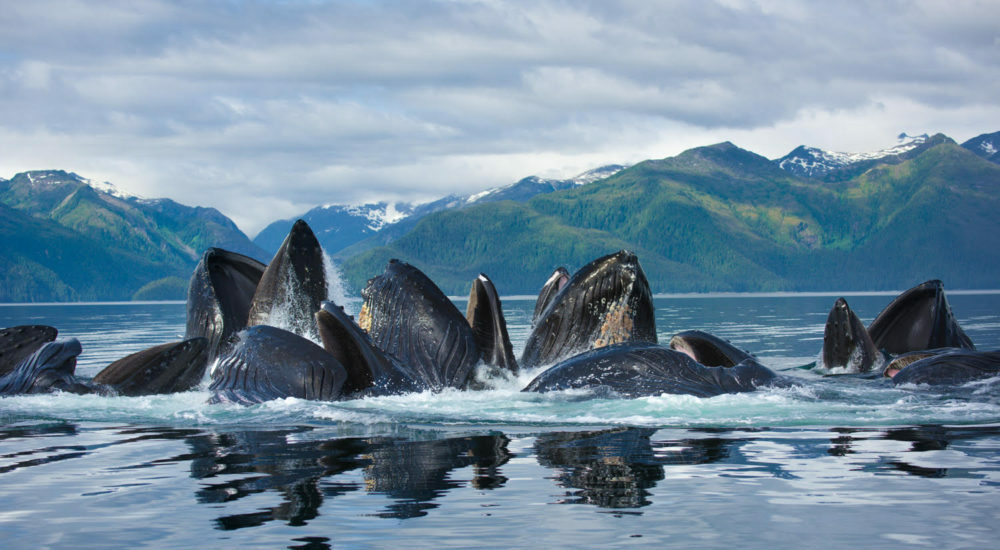According to Genesis 9:13-15, God sent the rainbow to promise that no matter how wicked human beings got in future, he would not send another Noah-scale flood. Climate activists see it differently. Apparently rainbows will come to tell us it’s all over. A paper in Global Environmental Change, a nice neutral title, examined “Global rainbow distribution under current and future climates” and found, a bit unexpectedly, that they will increase slightly overall. To which Patrick Moore of EcoSenseNow responded by tweeting “A ‘study’ has found that climate change is going to produce more rainbows. That’s all well and good, but what about unicorns and fairies?” But if they were real, climate change would be driving them extinct.
As Cicero said of philosophers, so we say of climate alarmists that there is nothing so absurd but one of them has said it. There is no parody you can invent that they have not already advanced seriously. Even that we should “Get Ready for More Volcanic Eruptions as the Planet Warms”. Just for laughs we also Googled “climate change and earthquakes” and sure enough, it’s going to make them more frequent and worse due to increased stress on tectonic plates due to “glacial melt” especially in the warming-faster-than-elsewhere Arctic. Plus “The reduction of glacial ice on and around volcanoes has also been shown to correlate with increased volcanic activity” and:
“Melting glaciers and thermal expansion of oceans from climate change may also contribute to another earthquake-related hazard. Rising seas are raising the water table in many places of the world, which can translate to an increased tendency for liquefaction during earthquakes.”
OK, to be fair, we also tried “climate change and hangnail” and got only a surfeit of metaphors. So not absolutely everything. But they are working overtime to fill in the gaps and perhaps it’s not time or money well spent.
Including getting in some good DEI with a scientific paper that, after making the Eurocentric claim that “The rainbow, a common atmospheric optical phenomenon, is a multicolored circle in the sky that results from the refraction and reflection of light by liquid water drops (Hardwick, 2004)” carefully adds that:
“Many have ascribed rainbows with positive meaning. For ancient Greeks, Romans, Norsemen, and Polynesians, rainbows were a path between Earth and Heaven created by Gods (Lee and Fraser, 2001, Businger, 2021). In the Bible, rainbows are mentioned as God’s promise to never again flood the Earth (Kuruppu and Liverman, 2011). Contemporary society commonly uses rainbows in flags and emblems to symbolize peace, happiness, and equality (Vince, 2020).”
Since we must have inclusion of all viewpoints except that there is no climate crisis, they also inform us that:
“Rainbows have also been characterized in negative ways. In the folklore of the Karen people of Southeast Asia, the rainbow is a dangerous demon that eats children (Jenkins, 2019). In several cultures in Central and South America, it is a malign spirit that causes harm (Lee and Fraser, 2001). People from various tropical locales see rainbows as snakes (Löwenstein, 1961, Veland et al., 2013).”
Really? We’re paying money to be told a rainbow might be a snake or a demon? Yup. And thus Bjorn Lomborg, who continues to believe in man-made global warming at least for now, while ridiculing the excesses of alarmists, tweeted indignantly:
“Your tax money at work:/ New research: Climate means 5% 𝗺𝗼𝗿𝗲 rainbows on average/ But some hotspots will see “severe rainbows decline”/ (Africa and S America won’t have quite as many more rainbows)/ Don’t we have more important things to research?”
Undoubtedly so. Even, we dare say, hangnail. But the study is still interesting in an unintended way. The people hoovering up all this government money that could be used to study ocean plastics, habitat loss or something else important don’t just think rainbows are important, they believe their models are so precise and complete that, despite their laughable incapacity to do clouds they can do mist so exactly and thoroughly as to predict a 1/20th increase in global rainbowing, and also specify subregions where you’re just not getting guided to that pot of gold.
Unless it’s a government grant, of course.



I love that you include Bible verses and just wanted to say thank you! I appreciate all that you folks do to help fight the insanity that is surely the most malignant cancer humanity has ever faced as Bjorn Lomborg and Michael Shellenberger have so eloquently chronicled.
With the enormity of rent seeking bounty exclusively available to those following the dictates of those gatekeeping today's equivalent scientific atmosphere of the era of Bruno and Galileo, anything with the conforming pieties alluding to climate change is funded. Why not Rainbows. The major difference is that today's heretics are cancelled, censored, smeared, starved of funding, or rewarded with loss of tenure and or employment as opposed to all of that plus being burned at the stake, so far.
I hope the paper authors adjusted for population growth as rainbows are literally in the eye of the beholder. So the more beholders there are to do the beholding then the greater the number of rainbows to be beholden.
Rainbows not being things, I wondered how the authors could possibly count them. They didn't. What they counted was "rainbow-viewing opportunities". Well, no. Not that either. What they actually did was to sample PICTURES of rainbows that people had uploaded to Flickr and labelled as containing a rainbow. Of course this is going to be biased by people's wealth (ownership of suitable cameras), leisure (time to spend on taking pictures and uploading them), and interest (in rainbows and in 'sharing' pictures and indeed in Flickr as such). It's really not clear to me that the authors *can* make allowance for this, however much they might want to, and I can find no evidence that they tried. Section 4.3 tells us "Our results are subject to several limitations and uncertainties. First, the distribution of the data used to train and validate the model may be biased. Physical barriers such as mountains and buildings can impede views of rainbows. Thus, rainbows that occurred near urban and mountainous areas may be underrepresented in training data. We did not include air pollution, which can prevent rainbow viewing, in our model. Moreover, we only used photographs labeled with the English word “rainbow”, and thus likely under-sampled in locations where people tagged rainbows with other languages or in regions where Flickr was not widely used during the study time frame. For instance, we have
relatively few training data points from Africa and Russia." Savour those last two sentences. It wasn't rainbows, it wasn't rainbow-viewing opportunities, it wasn't even photographs of rainbows, it was photographs of rainbows uploaded to Flickr complete with EXIF data and LABELLED IN ENGLISH. Yet this is presented as world-wide data.
Given this background, a projected (roughly) 5% increase in "rainbows" is meaningless.
If this were a project report from a BSc student, I'd give it a good mark.
If this were a project report or thesis from an MSc student, I'd send it back with a comment "you need to have a greatly expanded 'threats to validity' section".
If this were submitted to a journal I was an editor of, I'd send it back saying "rejected because you left the word [PARODY] out of the title and abstract."
I just googled climate change and pimples. Not only is it a thing, it's a big thing. Then I googled climate change and boils. It's a thing too, but not as bad as pimples apparently. I feel sorry for my great grandkids, I hope I'm gone before they hit puberty, yikes.